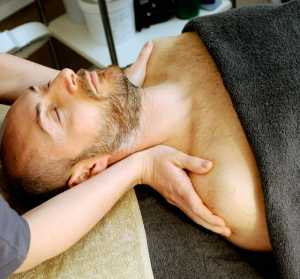Upper back and shoulder pain are common complaints that affect people of all ages and lifestyles. Whether you’re working at a desk for long hours, engaging in physical activities, or experiencing stress, these discomforts can significantly impact your quality of life. In this comprehensive guide, we will delve into the causes, symptoms, prevention, and treatment options for upper back and shoulder pain.
Contents
Understanding Upper Back and Shoulder Pain

Upper back and shoulder pain often go hand in hand, creating a complex web of discomfort that can significantly impact daily life. Understanding the intricate relationship between these two areas is essential for effectively managing and addressing the pain.
Anatomy of the Upper Back and Shoulders
Before delving into the relationship between upper back and shoulder pain, let’s briefly review the anatomy of these interconnected regions:
- Upper Back (Thoracic Region): The upper back includes the thoracic spine, which consists of 12 vertebrae labeled T1 to T12. The thoracic spine is connected to the ribcage and provides stability and support for the upper body.
- Shoulders: The shoulders are complex joints comprising the clavicle (collarbone), scapula (shoulder blade), and humerus (upper arm bone). The shoulder joint is highly mobile but also susceptible to instability and injury due to its intricate structure.
Signs and Symptoms
Recognizing the signs and symptoms of upper back and shoulder pain is crucial. Some of the causes are:
Dull or Sharp Pain: One of the most noticeable and prevalent symptoms of upper back and shoulder pain is discomfort ranging from a dull ache to sharp, stabbing sensations. This pain can be localized to a specific area or radiate outward, affecting neighboring regions such as the neck or arms.
Limited Range of Motion: Individuals experiencing upper back and shoulder pain often find their range of motion restricted. This limitation can manifest as difficulty in lifting the arms, reaching overhead, or performing basic daily activities involving the upper body.
Muscle Stiffness and Tension: Tight and tense muscles are common companions of upper back and shoulder pain. The affected muscles may feel knotted, and moving them could exacerbate the discomfort.
Radiating Pain: Upper back and shoulder pain can extend beyond their primary locations. Pain may radiate down the arms, causing sensations of numbness, tingling, or weakness in the hands and fingers. This phenomenon is often associated with nerve involvement or compression.
Muscle Spasms and Knots: Muscle spasms, characterized by sudden and involuntary contractions, can be a distressing symptom. These spasms can lead to the development of knots or trigger points within the muscles, contributing to ongoing discomfort.
Headaches: Tension in the upper back and shoulder region can sometimes lead to headaches. This pain might originate from muscle tension in the neck and upper back, propagating to the head.
Difficulty Sleeping: Upper back and shoulder pain can make finding a comfortable sleeping position challenging. Individuals may experience disrupted sleep patterns and wake up feeling less rested.
Impact of Poor Posture
Modern lifestyles often involve prolonged periods of sitting and hunching over screens, contributing to poor posture. Some of the impacts of this poor posture are;
- Muscle Imbalances and Strain: Engaging in slouched or hunched positions for extended periods can lead to muscle imbalances. Certain muscles become overused and tight, while others weaken and lengthen. This imbalance can result in chronic muscle strain, discomfort, and pain, particularly in the upper back, shoulders, and neck.
- Spinal Misalignment: Consistently poor posture can cause the spine to shift out of its natural alignment. This misalignment, often seen as increased curvature of the spine, can lead to conditions like kyphosis (hunchback) or lordosis (swayback), which can contribute to chronic pain and reduced mobility.
- Reduced Lung Capacity: Slouching compresses the chest cavity and limits the expansion of the lungs. This reduces lung capacity and inhibits efficient breathing, potentially leading to shallow breathing patterns and decreased oxygen intake.
- Digestive Issues: Poor posture can compromise the alignment of your digestive organs. This misalignment may interfere with the natural flow of digestion, leading to issues like acid reflux and slowed digestion.
Lifestyle Factors
Some of the lifestyle factors that can contribute to upper back and shoulder pain:
- Poor Posture: One of the leading causes of upper back and shoulder pain is poor posture. Slouching or hunching over can strain the muscles in the upper back and shoulders, leading to discomfort and pain over time.
- Muscle Imbalances: Imbalances between the muscles that support the shoulder joint can result from overuse or underuse of certain muscles. This can lead to strain, pain, and limited range of motion.
- Repetitive Strain: Activities that involve repetitive motions, such as typing, painting, or lifting heavy objects, can strain the muscles and tendons in the upper back and shoulders, causing pain.
- Stress and Tension: Emotional stress can cause muscles in the upper back and shoulders to tighten and become tense. This can lead to chronic pain and discomfort.
- Injury or Trauma: Accidents, falls, or sports-related injuries can lead to strains, sprains, or even fractures in the upper back and shoulder region.
- Degenerative Conditions: Conditions like osteoarthritis, herniated discs, and degenerative joint disease can cause upper back and shoulder pain, especially as you age.
Seeking Professional Help
If pain persists, seeking professional help is essential. Doctors and physical therapists can provide tailored treatment plans, which may include medication, physical therapy, or other interventions. Addressing the underlying causes of pain ensures effective and lasting relief. Some of the professions to consult are:
- Primary Care Physician: Your primary care doctor is a great starting point. They can evaluate your symptoms, provide initial treatment, and refer you to a specialist if necessary.
- Orthopedic Specialist: Orthopedic doctors specialize in musculoskeletal conditions, including shoulder issues. They can diagnose and treat a wide range of shoulder problems, from injuries to chronic conditions.
- Physical Therapist: Physical therapists can help design exercises and rehabilitation programs to address shoulder pain, improve mobility, and prevent further issues.
- Rheumatologist: If your shoulder pain is related to inflammatory or autoimmune conditions, a rheumatologist specializes in diagnosing and treating these types of disorders.
- Sports Medicine Specialist: If your shoulder pain is sports-related or caused by physical activity, a sports medicine specialist can provide expertise in treating these types of injuries.
- Chiropractor: Chiropractors can provide manual adjustments to the spine and joints, which can alleviate pain and improve alignment.
- Pain Management Specialist: If your shoulder pain is chronic and challenging to manage, a pain management specialist can offer various treatments, including injections and medications.
Prevention Strategies

Preventing future instances of upper back and shoulder pain involves adopting healthy habits. Some of these are:
Mindful Awareness: Become mindful of your posture throughout the day. Regularly check in with your body’s alignment, especially when sitting or standing for extended periods.
Ergonomic Workstation Setup: If you work at a desk, ensure your workstation is ergonomically designed. Adjust your chair height, and desk height, and monitor position to maintain neutral postures and reduce strain.
Proper Sitting Posture: When sitting, keep your feet flat on the floor, knees at or slightly below hip level, and your back against the chair’s backrest. Avoid slouching or leaning forward.
Standing Posture: Stand with your feet hip-width apart, weight evenly distributed on both feet. Keep your shoulders relaxed, your spine neutral, and your head aligned with your body.
Device Usage Awareness: Hold electronic devices such as phones and tablets at eye level to prevent hunching over. Consider using device stands or holders to maintain proper alignment.
Regular Breaks: Take short breaks throughout the day to stand up, stretch, and walk around. This helps relieve muscle tension and encourages better circulation.
Stretching Routine: Incorporate daily stretching exercises that focus on the upper back, shoulders, and neck. Gentle stretches can help alleviate muscle tension and maintain flexibility.
Strength Training: Engage in exercises that strengthen the muscles supporting the upper back and shoulders. Focus on exercises that target the upper back, core, and shoulder muscles.
Yoga or Pilates: Practicing yoga or Pilates can improve flexibility, core strength, and body awareness, all of which contribute to better posture.
Healthy Habits for Strong Shoulders

Maintaining strong and flexible shoulders is vital for preventing pain. These habits are:
- Rest and Recovery: Allow your shoulder muscles adequate time to recover between workouts. Overtraining can lead to strain and potential injuries.
- Hydration and Nutrition: Stay hydrated and maintain a balanced diet rich in nutrients that support muscle health, such as protein and vitamins.
- Avoid Overuse: Refrain from overloading your shoulders with excessive weight or repetitive movements. Variation in your workouts can help prevent overuse injuries.
- Consultation with Professionals: If you’re new to exercise or have pre-existing shoulder issues, consider consulting a fitness professional or physical therapist for guidance on creating a safe and effective workout routine.
Conclusion
In conclusion, addressing upper back and shoulder pain requires a comprehensive approach that includes understanding the causes, practicing good habits, seeking professional guidance when necessary, and making mindful lifestyle choices. By prioritizing your physical well-being, you can alleviate pain, enhance mobility, and enjoy a healthier, pain-free life.
If you’re experiencing Shoulder pain, physical therapy for shoulder pain at PhysioMantra can help: Book an online physical therapy session.



